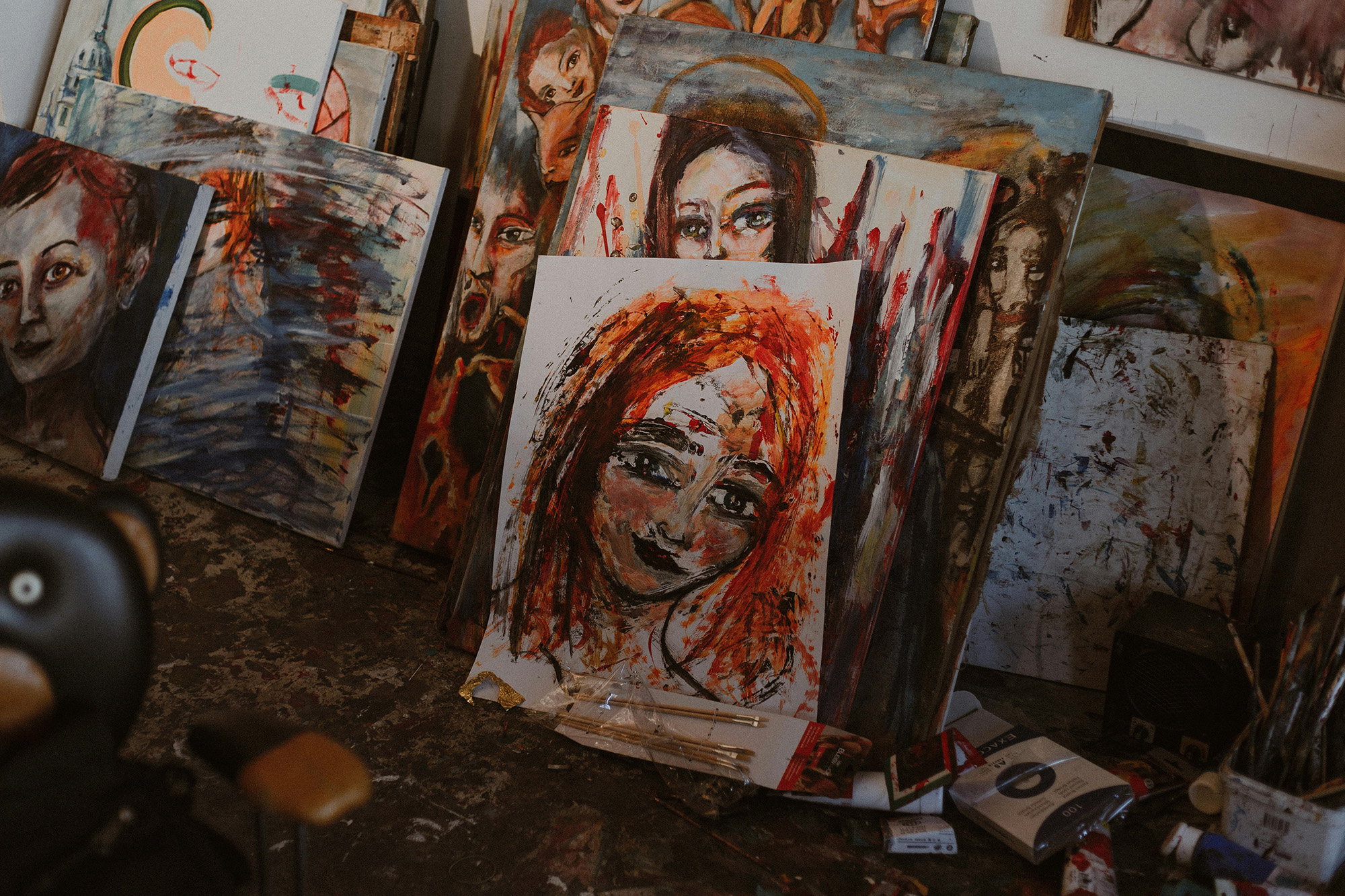
What is art therapy?
Art therapy combines traditional psychotherapy techniques with creative expression through visual art making. Integrating these two processes encourages clients to explore their sense of self and experiences, cope with events in their lives, and improve self-efficacy by learning tangible skills. Art therapists are trained in both art and psychotherapy at a Masters-level or higher degree. In New York, art therapists are credentialed as Licensed Creative Arts Therapists (LCATs).
Art therapy is often grouped into two overarching approaches: art psychotherapy and art as therapy. Historically, the difference has mostly been related to the context in which art therapy is practiced. Art psychotherapy refers to a more clinical approach where art making is combined with traditional talk therapy techniques, while art as therapy has been used to describe a primarily studio-based setting where healing happens secondary to art making. Both approaches are art therapy, and both are appropriate in different settings and for different healing goals. A good art therapist will listen and respond to what you need, and adapt to your needs in sessions as they change over time.
How does art therapy work?
Art therapy is an integrative method of mental health treatment. This means that beyond verbally discussing problems or goals, an art therapist will encourage you to use different materials or prompts that activate your physical and sensory experiences. This can be particularly helpful for those who find themselves intellectualizing their feelings and/or those who are verbally defensive when exploring challenging concepts.
Different art materials evoke different sensory, emotional, symbolic, and physical responses. For example, using child friendly materials like finger paints or crayons can activate parts or emotions that existed before language developed. Fluid materials like watercolor and clay may help you practice letting go of your need for control.
Everyone has their own instinctual preferences for materials, and an art therapist can work with you to understand why and how they can help you express yourself. Sometimes it is also helpful to challenge yourself, work outside your comfort zone, and try something new. The simple act of creating provides you with opportunities to practice problem solving, strengthen frustration tolerance, and improve our communication skills.
An art therapist can guide you through exploring new challenges while cultivating a safe space for the experience. Art made in therapy does not have to be your best work and may even be ritually destroyed as part of the therapeutic process. The art is there only in service of your emotional experience..
What does an art therapy session look like?
Art can be used different ways within a therapy session. If you struggle with identifying or expressing emotions, we might start by thinking about how to illustrate the emotional experience. Thinking about a certain emotion, like anxiety, and drawing how it feels or forming a representation out of clay may help us develop identifying language through the use of symbolism. Once we can identify a feeling, we can develop strategies to cope and manage our response when we feel it surface.
Beyond illustrating how we feel, art therapy can be used to think about problems as metaphors. Picture a bridge spanning from one part of your life to where you see yourself in the future. Where are you on that bridge? Are there any obstacles in the scenery? What’s the weather like? Thinking about your goals or problems in different terms might help you identify new solutions or consider other factors in your circumstances that were previously overlooked.
Art therapy can also function beyond problem-solving in sessions and may be used as a somatic practice. Sometimes we might just need to focus or ground ourselves before we think about big issues. Art can also complement other mindfulness exercises, like deep breathing. Coordinating our movements when drawing or painting to match our breathing can help us slow down, calm down, and reconnect with our physical experiences.
Is art therapy a good fit?
Like traditional talk therapy, art therapy is useful for processing traumatic events, addressing symptoms of mental illness, or developing personal insight. Art therapy is especially helpful if verbal expression feels limiting, or if you feel like you just need to try a more action oriented or somatic approach. Practicing artistic skills requires problem-solving, which can translate to looking at other problems in our lives with a fresh perspective. The integration of sensory experiences in art therapy makes it particularly suited for those who struggle to express emotions and experiences verbally, like those who are neurodivergent (Autistic, ADHD, OCD), those who have experienced trauma, and those who tend to think and learn visually. Many artistic tools and processes are adaptable towards physical and cognitive disabilities, providing a point of access for individuals who feel other approaches have not addressed their specific needs. Unique to art therapy is the presence of the art in the session: while this sounds obvious, the art made in sessions can reveal insights we might not have accessed through other means. If this sounds like something you want to try, reach out to connect with a Spotted Rabbit art therapist at our Brighton or Pittsford studios.

Frances Barker is a graduate student at Syracuse Universily working on a master’s degree in creative arts therapy. They are completing their internship at Spotted Rabbit Studio and are under supervision by Kit Shulman, LCAT.
Frances specializes in LGBTQIA+ issues, neurodivergence, complex trauma, relationship dynamics, and substance abuse. They are currently seeing clients at Spotted Rabbit’s Brighton studio.
